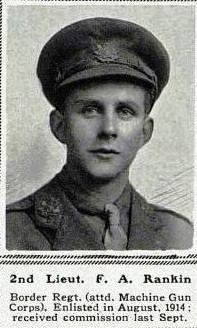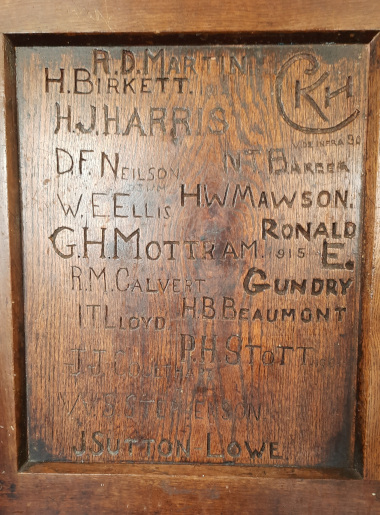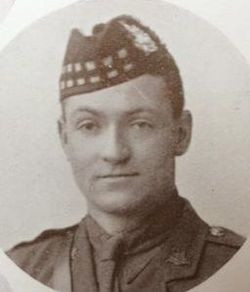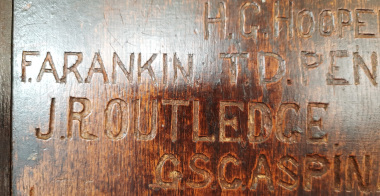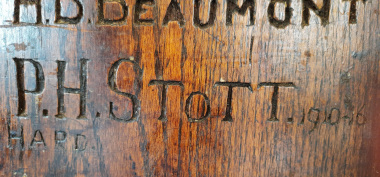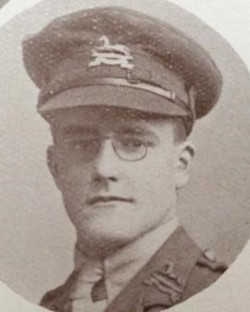|
 |
The Old St Beghian | |
| January 2025 | |||
George Robson (FN 57-64) has completed his research into some of the boys whose names appear on the paneling in the Foundation.
THE FINAL THREE.
“The January 2024 bulletin included an article regarding Percy Trotter, who was one of the eight St Beghians who had carved their names on the Foundation dining room paneling and subsequently fell in action during the Great War. They are highlighted on the plaque that was unveiled on the panels on St Beghians’ Day 2018.
Since the plaque was unveiled, details of five of the eight have been unearthed and reported on in subsequent Bulletins.
Thanks to the assistance of Blyth (Northumberland) Library, the Commonwealth War Graves Commission and the Blyth Battery some details of the remaining three can now be given:
FREDERIC ALAN RANKIN was the youngest son of James and Jane Rankin of 2 Valley Road, Welwyn Garden City, who were natives of Oxton, Cheshire. He attended the school from 1911 until 1915 when he volunteered for the 1st Battalion Border Regiment. As a 2nd Lieutenant he was attached to D Battalion Tank Corps. In January 1917 corps D and C were amalgamated to form 1 Tank Brigade under the command of Colonel (later Brigadier) Christopher Baker-Carr and soon saw action at Arras. It was during this action, on 23rd April, that Frederic was killed. He was aged 20. He was buried at Wancourt British Cemetery, Nord-Pas-de-Calais, France.
JOHN ROUTLEDGE was the son of Richard and Jane Routledge of Galeaberry House, Brampton, Cumbria. He attended the school from 1911 until 1915 and shortly afterwards volunteered for the first battalion of the King’s Own Scottish Borderers. He served as a rifleman and was killed near Arras on 16th April 1917. His name appears on the Arras memorial’s Bay 6 (ref. 124934637) at Nord-Pas-de-Calais in France.
PHILLIP H. STOTT was the son of The Reverend H. R. Stott of Beckwithshaw Vicarage, Harrogate. He entered the school in 1912, and apart from becoming a house prefect, rose to become Head Boy. He became an Exhibitioner of Merton College, Oxford but in February 1917 took leave from this to volunteer for the West Yorkshire Regiment (Prince of Wales’ Own) 4th Battalion.
In May 1917 the Reverend Stott received a letter from Lieutenant Colonel Wm. Oddie which reported that his battalion had been ‘involved in a great struggle on 26th April and put up a magnificent fight. Your son was with his company in the front line. There is no news of him and we can only hope he is wounded and in the hands of the Germans. He had not been very long with us but quite long enough to appreciate his value. He was a reliable officer, and his loss is a serious matter to the battalion. I sympathise with you in this terrible uncertainty about his fate and am hoping you may have good news of him before long.’
On 13th July 1917 the Harrogate Advertiser reported that Philip Stott ‘is now known to have been killed on April 25th’. He was buried in the massive Tyne Cot Cemetery at Passchendaele and his name appears on panel 42 (ref. 11961618).LEST WE FORGET.”
Home
The St Beghian Society
St Bees School,
St Bees, Cumbria, CA27 0DS.
Tel: (01946) 828093 Email: osb@stbeesschool.co.uk
Web: www.st-beghian-society.co.uk
![]()
